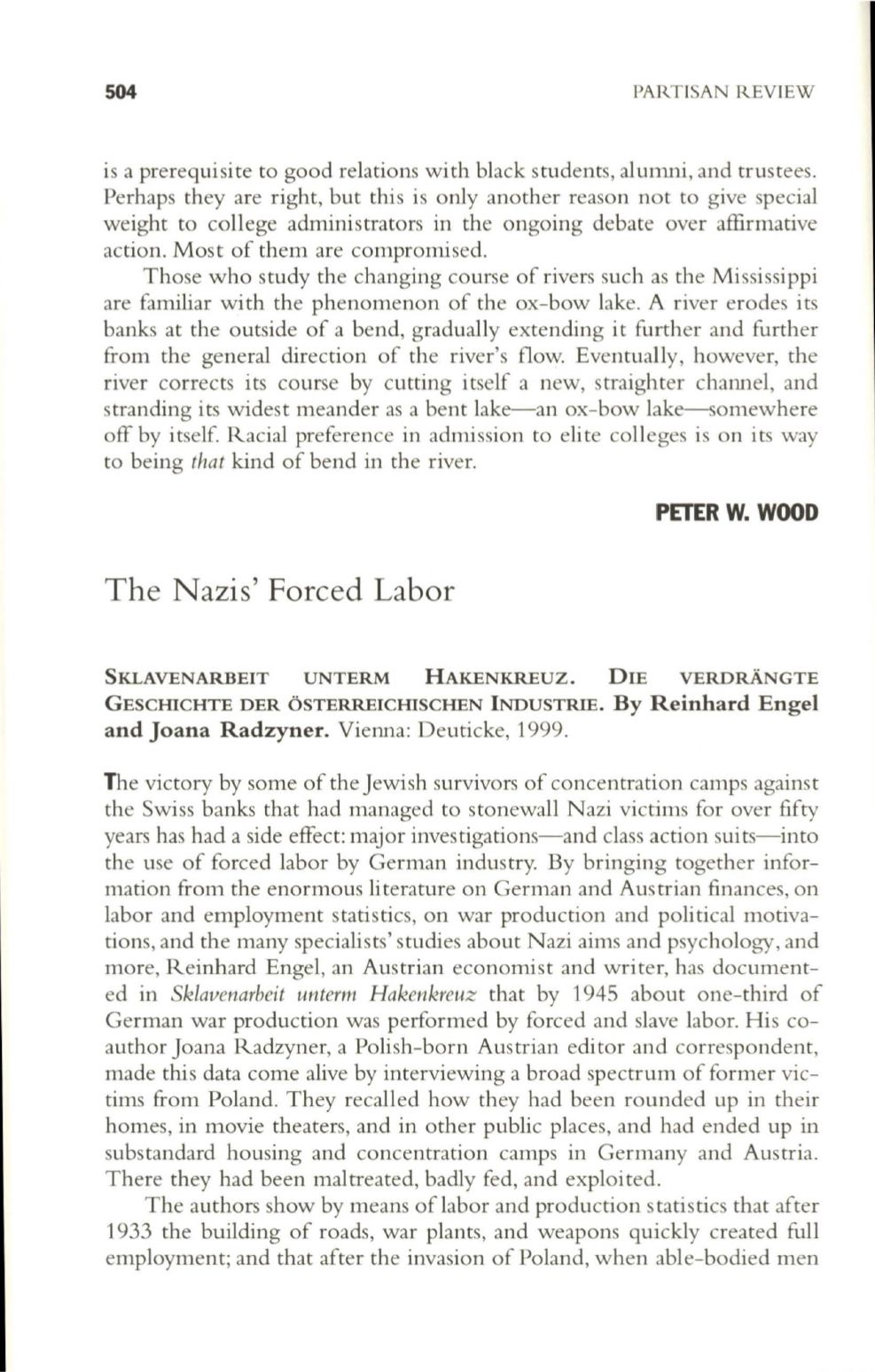
504
PARTISAN REVIEW
is a prerequisite to good relations with black students, al urnni , and trustees.
Perhaps they are right, but this is only another reason not to give special
weight to college administrators in the ongoing debate over affirmative
action. Most of them are compromised.
Those who study the changing course of rivers such as the Mississippi
are familiar with the phenomenon of the ox-bow lake. A river erodes its
banks at the outside of a bend, gradually extending it further and further
from the general direction of the river's flow. Eventually, however, the
river corrects its course by cutting itself a new, straighter channel, and
stranding its widest meander as a bent lake-an ox-bow lake-somewhere
off by itself. Racial preference in admission to elite colleges is on its way
to being
that
kind of bend in the river.
PETER W. WOOD
The Nazis' Forced Labor
SKLAVENARBEIT
UNTERM
HAKENKREUZ.
DIE VERDRANGTE
GESCHICHTE DER OSTERREICHISCHEN INDUSTRIE.
By
Reinhard Engel
and Joana R adzyner.
Vienna: Deuticke, 1999.
The victory by some of the Jewish survivors of concentration camps against
the Swiss banks that had managed to stonewall Nazi victims for over fifty
years has had a side effect: major investigations-and class action suits-into
the use of forced labor by German industry. By bringing together infor–
mation from the enormous li terature on German and Aus trian finances, on
labor and employment statistics, on war production and political motiva–
tions, and the many specialists' studies about Nazi aims and psychology, and
more, Reinhard Engel, an Austrian economist and writer, has document–
ed in
Sklavenarbeit unterm Hakenkreuz
that by 1945 about one-third of
German war production was performed by forced and slave labor. His co–
author Joana Radzyner, a Polish-born Austrian editor and correspondent,
made this data come alive by interviewing a broad spectrum of former vic–
tims from Poland. They recalled how they had been rounded up in their
homes, in movie theaters, and in other public places, and had ended up in
substandard housing and concentration camps in Germany and Austria.
There they had been maltreated, badly fed, and exploited.
The authors show by means oflabor and production statistics that after
1933 the building of roads, war plants, and weapons quickly created full
employment; and that after the invasion of Poland, when able-bodied men


